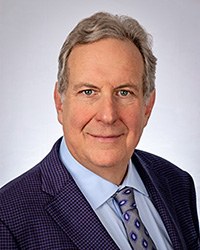This episode of Chair’s Corner features a discussion with Dr. Richard Loeser and Dr. Ron Falk on research in osteoarthritis. Dr. Loeser discusses prevention and treatment of osteoarthritis in the second segment of their conversation.


“The drugs that are available right now, they are fairly good at helping to control pain. But they don’t really affect the disease progression. Nonsteroidals will definitely help reduce pain, but then, of course, they have side effects.
You can get just about as much benefit by doing exercises. So by strengthening the muscles that help support the joint, you can get just as much pain relief, plus more improvement in function than you can by taking nonsteroidals.“ – Dr. Richard Loeser
Dr. Falk: If you’re taking care of a patient with osteoarthritis, do you use antioxidants? Do you use anything in the hopes of stimulating Nrf2, the 2 sides of that equation?
Dr. Loeser: Not yet, we don’t have something that we know will do that. In terms of dietary factors, we still recommend a healthy, well-balanced diet, figuring that a combination of vitamins and minerals in your diet will have some benefit, rather than say a single, particular factor you would take over the counter.
Dr. Falk: If you had osteoarthritis, how would you treat it? Let’s say it’s your knee, it just slows you down.
Dr. Loeser: The drugs that are available right now, they are fairly good at helping to control pain. But they don’t really affect the disease progression.
Dr. Falk: Nonsteroidal or anti-inflammatory drugs.
Dr. Loeser: Nonsteroidals will definitely help reduce pain, but then, of course, they have side effects. You can get just about as much benefit by doing exercises. So by strengthening the muscles that help support the joint, you can get just as much pain relief, plus more improvement in function than you can by taking nonsteroidals.
Dr. Falk: You’re telling me that I should exercise more of the muscles around my knee, because that’s going to help the osteoarthritis, even though it hurts when I’m doing it?
Dr. Loeser: Yes. You have to gradually build up the exercises so you can tolerate it. But the muscles are helping to control the load that’s put on your joint. The cartilage that’s in your joint doesn’t absorb any shock—it’s the muscles, bone, that are really absorbing the joint loads. So by strengthening the muscles, you lower the amount of load on the rest of the joint.
Dr. Falk: That requires at least a gradual approach of muscle strengthening, in some sort of organized exercise program. We wouldn’t want the average listener to suddenly start exercising and hurt themselves.
Dr. Loeser: Right. I’ve been involved in several kinds of exercise studies now. What we’ve learned is that learning the right exercises, and having a physical therapist, or an exercise specialist teach you the exercises and watch you do them correctly is really important to be able to do them safely and build up your muscles adequately.
Dr. Falk: What happens in the hands? So many people have real joint complaints in the hands. How do you exercise your hand?
Dr. Loeser: There are some exercises for hands. Squeezing tennis balls, and other types of devices. But you’re right, that’s more limited in terms of what you might be able to do for other muscles such as the ones that are around your knee joint.
Dr. Falk: The thought had been that one should mold clay, that clay was helpful. Is that right? Is that just a hand exercise?
Dr. Loeser: It can help reduce stiffness in your hands by doing that type of motion. But in terms of how much it strengthens muscles it doesn’t seem to have that much effect on the muscles themselves.
Dr. Falk: How do you prevent osteoarthritis? Obviously you would like to prevent traumatic injury. Sounds like losing weight would be equally important to prevent obesity-induced joint disease. What else can one do to prevent osteoarthritis?
Dr. Loeser: As you mentioned, weight loss for people who are overweight, and that’s been shown to prevent the development of osteoarthritis. And then exercising and keeping your muscles strong because your muscles really help to support your joint, so if you stay in shape and keep your muscles strong, there’s some evidence that that can help prevent osteoarthritis as you get older.
Dr. Falk: Let’s talk about this form of exercise. Running versus walking, treadmills versus an ellipse, marathons or Ironmans? What’s the recommendation?
Dr. Loeser: The recommendation really depends on your individual joints. If you’re healthy, with healthy joints, you can run marathons and there’s no evidence that it damages your joints. There have been some really well-done studies in older adults who have run marathons for 20 years and they actually have less osteoarthritis than people of the same age who don’t run. There’s this misconception that years of running will destroy your joint and cause arthritis. That’s not true, if you have normal joints.
If you’ve injured your joints, torn your ACL, torn your meniscus, and then you run on that joint, that’s when you’re in trouble for getting osteoarthritis. The type of exercise that you do really depends on your individual joint. If you’ve never had a joint injury and you’re healthy, weight-bearing exercises are great.
If you’ve injured your joint before, then something like the elliptical or water exercises are probably safer.
Dr. Falk: Let’s take the more common reality of someone who is out of shape who is now trying to get into shape and hasn’t been a long-term walker. What do you tell them to do? Gradually increase the amount of exercise?
Dr. Loeser: Right, gradually increase it as they tolerate it. It’s probably better to exercise every other day so that you give your muscles a day to adapt and rest up, rather than every day exercises seem to cause more muscle break-down. And then having some type of instruction doing correct exercises is a lot of help as well.
Dr. Falk: Let’s come back to the work that you’ve been doing with reactive oxygen species. Where do you think all that’s going to go? What should we look out for in the future?
Dr. Loeser: I think we’re going to be able to learn how to target the effects of reactive oxygen species in terms of the cell signaling. It’s really the alteration in cell signaling that’s driving the joint tissue breakdown. Developing new inhibitors that target those specific processes are going to be most promising for treating arthritis.
Dr. Falk: Thank you so much for spending time with me today, Dr. Loeser. We look forward to hearing all about your studies as they unfold.
Dr. Loeser: You’re welcome.
Dr. Richard Loeser is the Herman and Louise Smith Distinguished Professor of Medicine in the Division of Rheumatology, Allergy, and Immunology, and is Director of Basic and Translational Research in the Thurston Arthritis Research Center.
var audio; var playlist; var tracks; var current; init(); function init(){ current = 0; audio = $(‘audio’); playlist = $(‘#playlist’); tracks = playlist.find(‘li a’); len = tracks.length – 1; audio[0].volume = .50; playlist.find(‘a’).click(function(e){ e.preventDefault(); link = $(this); current = link.parent().index(); run(link, audio[0]); }); audio[0].addEventListener(‘ended’,function(e){ current++; if(current == len){ current = 0; link = playlist.find(‘a’)[0]; }else{ link = playlist.find(‘a’)[current]; } run($(link),audio[0]); }); } function run(link, player){ player.src = link.attr(‘href’); par = link.parent(); par.addClass(‘active’).siblings().removeClass(‘active’); audio[0].load(); audio[0].play(); }